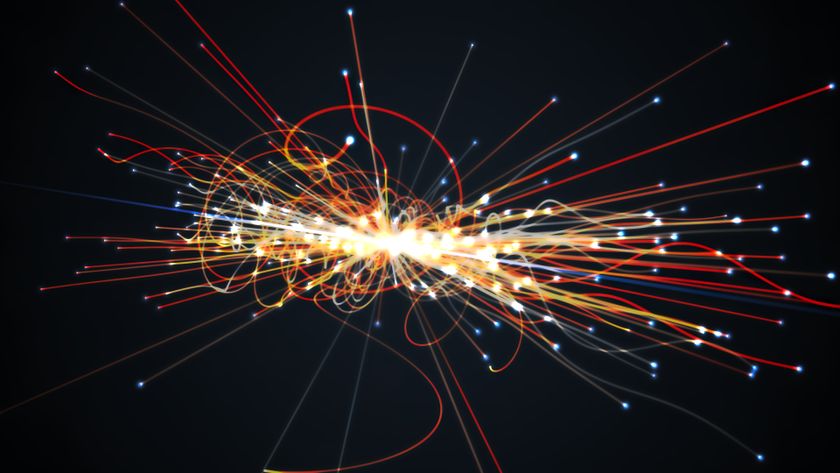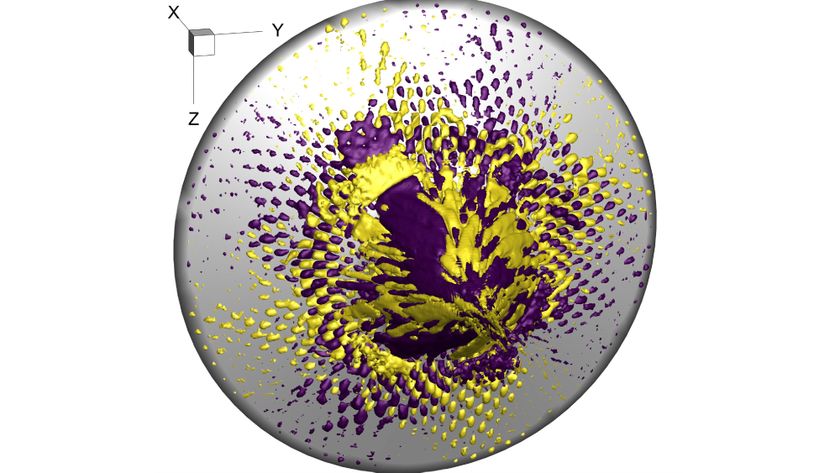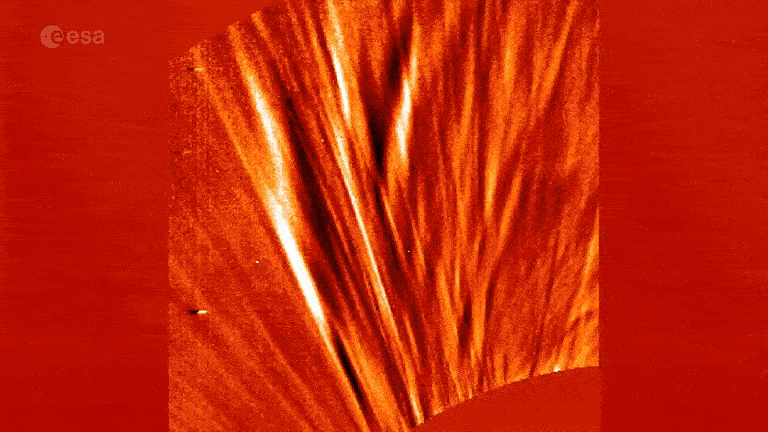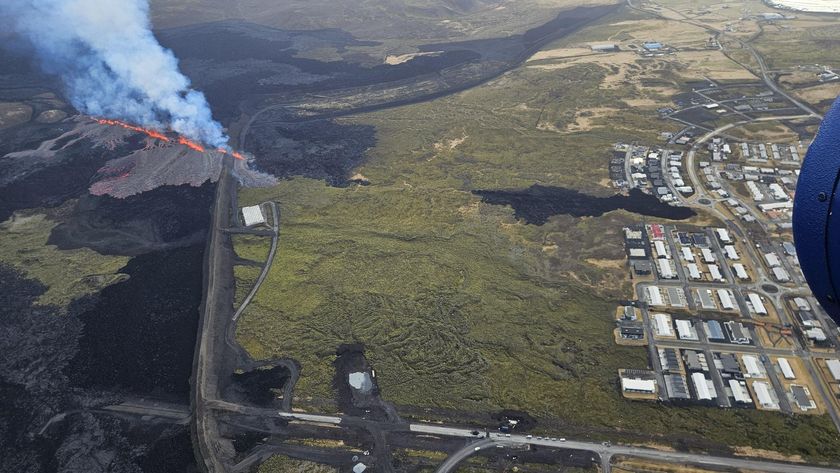Government scientists discover new state of matter that's 'half ice, half fire'
U.S. government scientists have developed a new phase of matter dubbed 'half ice, half fire,' which unites opposing electron spins in a unique magnet.
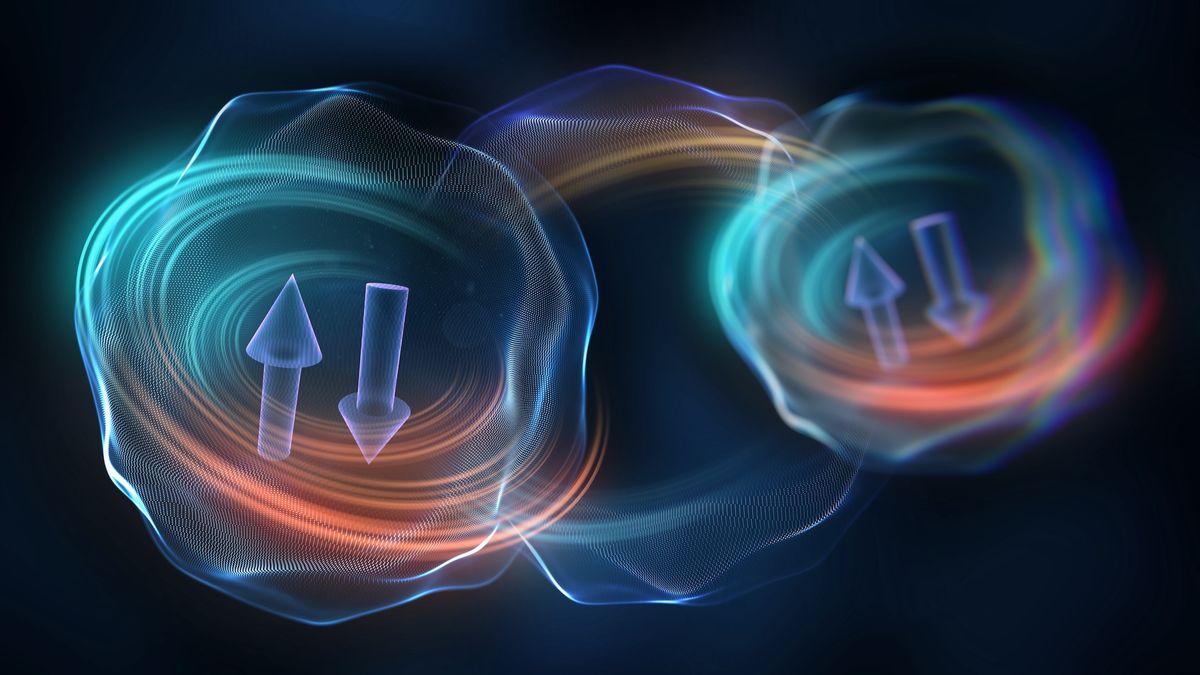
Physicists have discovered a new phase of matter, dubbed "half ice, half fire," that could open the door to new advancements in fields such as quantum computing.
The new phase combines a number of "up" spins of electrons within an atom, which are highly ordered and referred to as cold cycles, with a number of "down" spins, which are highly disordered and referred to as hot cycles — lending the phase its nickname, "half ice, half fire."
"Half ice, half fire" is a significant discovery not only because of its novelty but also because it can produce sharp switching between phases at reasonable temperatures. It's the twin of the "half fire, half ice" state first observed by the same team at Brookhaven National Laboratory — physicists Weiguo Yin and Alexei Tsvelik, alongside their then intern, Christopher Roth — back in 2016.
These discoveries provide insight into some of the central questions in physics and the materials sciences, according to the team, as well as advance the ability to identify new states of matter with exotic properties and manipulate the transition between those states.
"Solving those problems could lead to great advances in technologies like quantum computing and spintronics," Yin said in a statement from Brookhaven National Lab. Tsvelik added that the team's findings "may open a new door to understanding and controlling phases and phase transitions in certain materials."
Related: Exotic new state of matter discovered by squishing subatomic particles into an ultradense crystal
"Missing pieces of the puzzle"
Yin and Tsvelik first discovered "half ice, half fire" when performing research on a type of magnetic material called a ferrimagnet. Ferrimagnets have populations of atoms with opposing magnetic moments, but because the populations are unequal, some magnetization remains.
Sign up for the Live Science daily newsletter now
Get the world’s most fascinating discoveries delivered straight to your inbox.
The specific ferrimagnet in which "half ice, half fire" was observed is Sr3CuIrO6, a compound that consists of strontium, copper, iridium and oxygen. It's the same material in which the team originally discovered "half fire, half ice," which they induced, or caused to occur within the ferrimagnet, by exposing the material to an external magnetic field. In "half fire, half ice," hot spins occurred on the copper sites and had smaller magnetic movements, while the iridium sites yielded cold spins with larger magnetic movements.
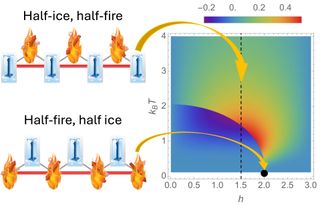
Although it was an exciting discovery, Tsvelik admitted that it was only a first step.
"Despite our extensive research, we still didn't know how this state could be utilized," he said. "We were missing pieces of the puzzle."
Now, the recent work, spearheaded by Yin, has revealed that "half fire, half ice" has a hidden and opposite state in which the hot and cold spins swap positions. The team identified an extremely narrow temperature range in which the switch between phases takes place, which has promising implications for a number of fields.
Commercially, this kind of ultrasharp phase switching could lead to advances in refrigeration technology. It may even be possible to utilize the phases themselves as bits in a novel approach to quantum information storage. "The door to new possibilities is now wide open," Yin said.
The team's research into the new phase was published in the journal Physical Review Letters in December 2024.

Alan is a freelance tech and entertainment journalist who specializes in computers, laptops, and video games. He's previously written for sites like PC Gamer, GamesRadar, and Rolling Stone. If you need advice on tech, or help finding the best tech deals, Alan is your man.
You must confirm your public display name before commenting
Please logout and then login again, you will then be prompted to enter your display name.
